What is Tempura Udon?
Tempura Udon (天ぷらうどん) is a classic Japanese noodle dish made with thick wheat “udon” noodles in a dashi-based soup served with vegetables (and seafood, usually shrimp) that have been deep fried in a light, crispy batter we call “tempura”.
The tempura can either be placed on top of the udon soup so that it soaks up the flavor, or served on the side so that it keeps its crunch. You can also dip the tempura in the noodle soup as you eat. It’s up to you!
In this recipe, I will only be using vegetables for my tempura.
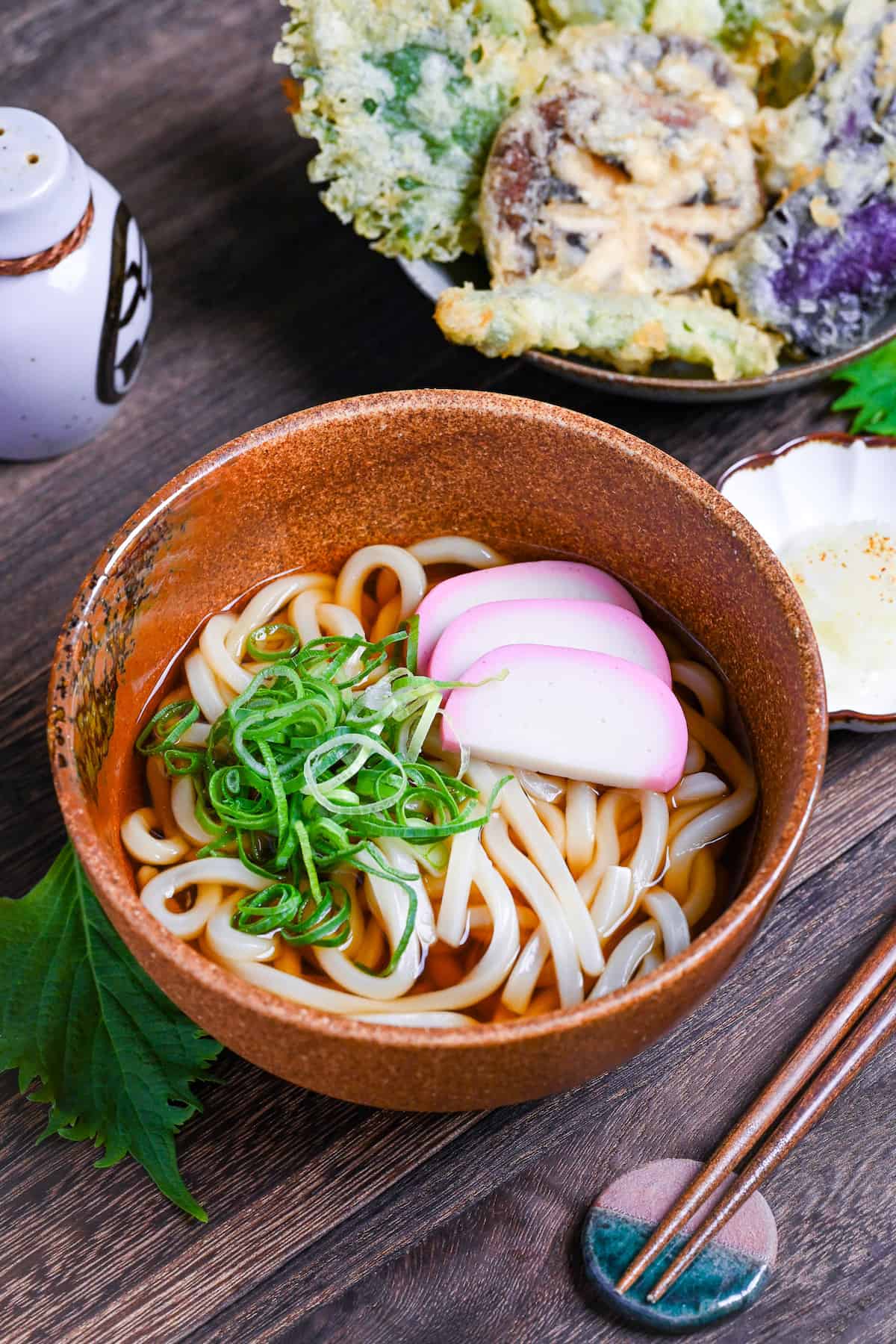
Ingredients & Substitution Ideas
- Tempura Batter:
- Cold water and chilled sparkling water: These keep the batter light and crispy.
- Cornstarch and cake flour: A mix of these gives the tempura its signature texture.
- Medium egg: This binds the batter together.
- Tempura Ingredients: Use asparagus, shiitake mushrooms, eggplant, and perilla leaves (shiso). This variety offers a delightful range of flavors and textures.
- Cooking Oil: For shallow frying, I recommend neutral oils with high smoke points, like canola, sunflower, or peanut oil. Personally, I prefer rice bran oil and extra virgin (white) sesame oil for both shallow and deep frying.
- Udon Noodles: These thick wheat noodles have a wonderful chewy texture. You can go for pre-boiled udon, dried udon, or frozen udon. If you’d like a fun weekend project, you can make your own homemade udon noodles!
- Dashi Broth: This is essential for the flavor base. You can choose from simple awase dashi or vegan dashi. If you’re in a hurry, instant dashi granules or packets work just fine.
- Soy Sauce: For brand recommendations, take a look at my comprehensive soy sauce guide.
- Mirin: Hon Mirin is the best choice for authentic Japanese flavor.
- Toppings: Garnish with finely chopped green onions, kamaboko fish cake, and Japanese chili powder (shichimi togarashi).
The great thing about this recipe is that you can use any of your favorite vegetables! Some examples are below:
- Lotus root (renkon)
- Kabocha (Japanese pumpkin/squash)
- Sweet potato
- Bell peppers
- Okra
- Carrot
- Mushrooms
Curious about the exact brands and products that bring my recipes to life? Discover the brands and ingredients behind my recipes at the Sudachi Amazon Storefront. Explore my handpicked pantry essentials and find your next kitchen favorites!
Jump to Full Recipe Measurements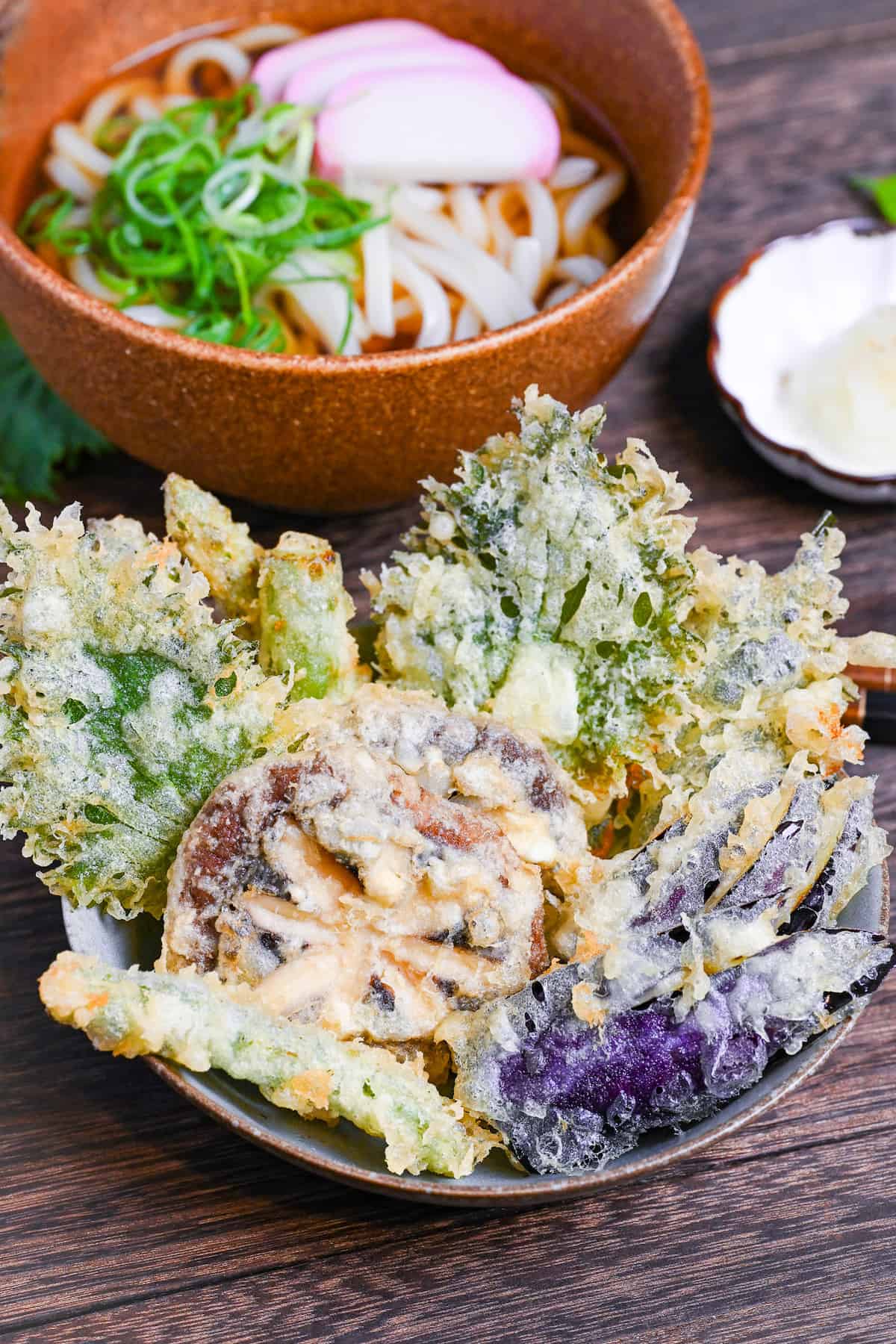
Visual Walkthrough & Tips
Here are my step-by-step instructions for how to make Vegetable Tempura Udon at home. For ingredient quantities and simplified instructions, scroll down for the Printable Recipe Card below.
Chill water in the fridge along with an unopened bottle of sparkling water.
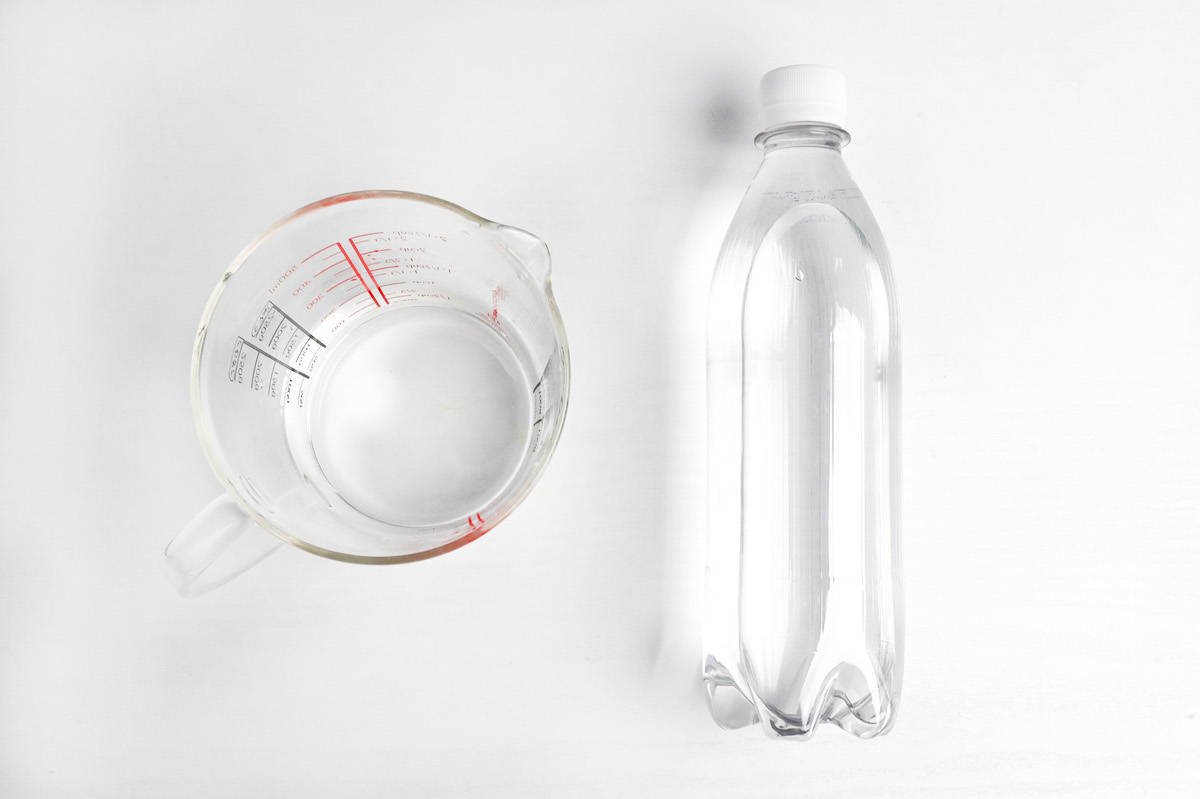
Sift cornstarch and cake flour together and refrigerate.
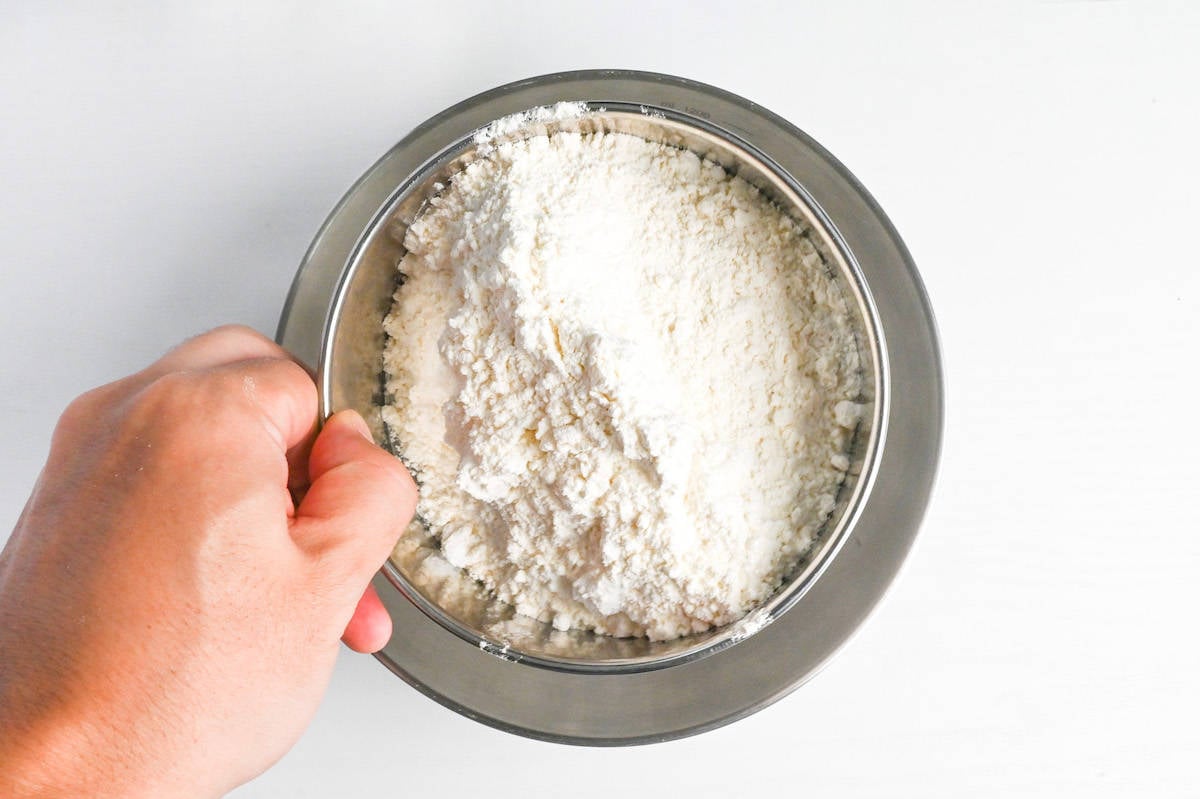
Preheat cooking oil to 180°C.

Wash, peel, cut, and thoroughly dry the vegetables. Lightly coat them with flour.
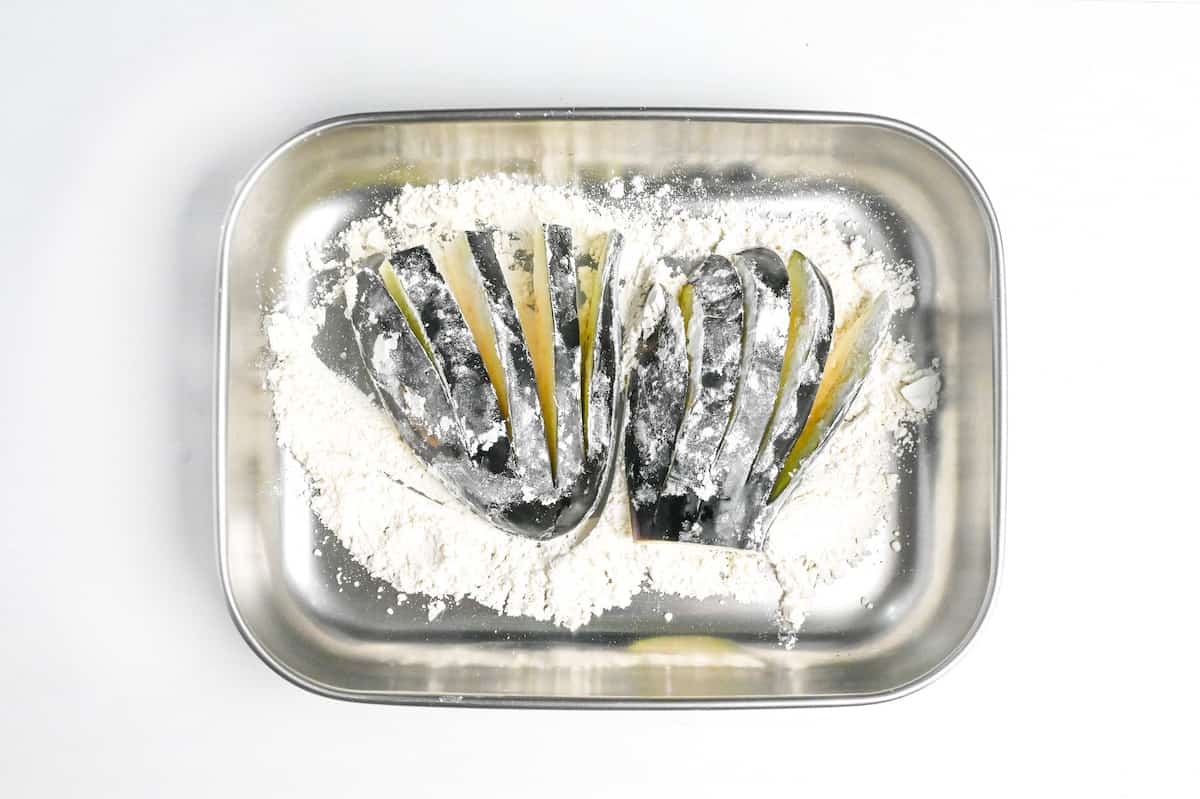
Mix chilled water, sparkling water, and a cold egg. Remove any foam.
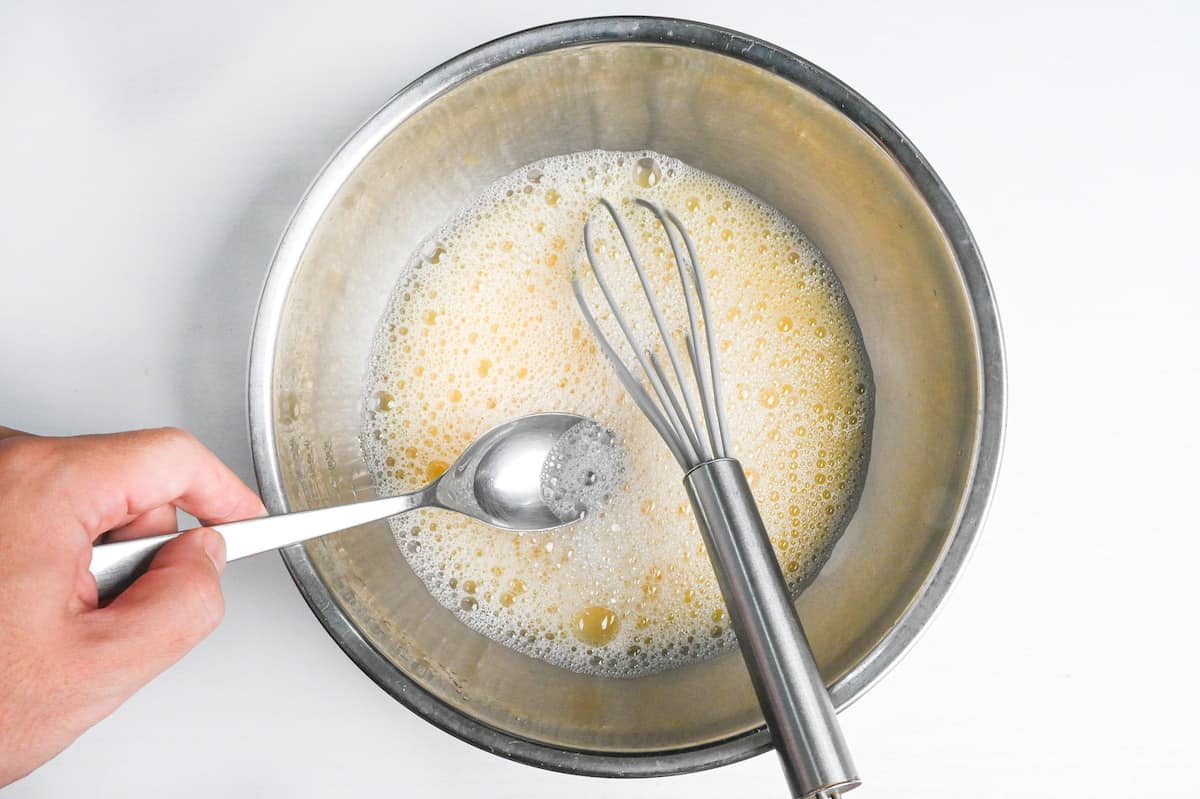
Gradually sift in the flour mixture and mix lightly.
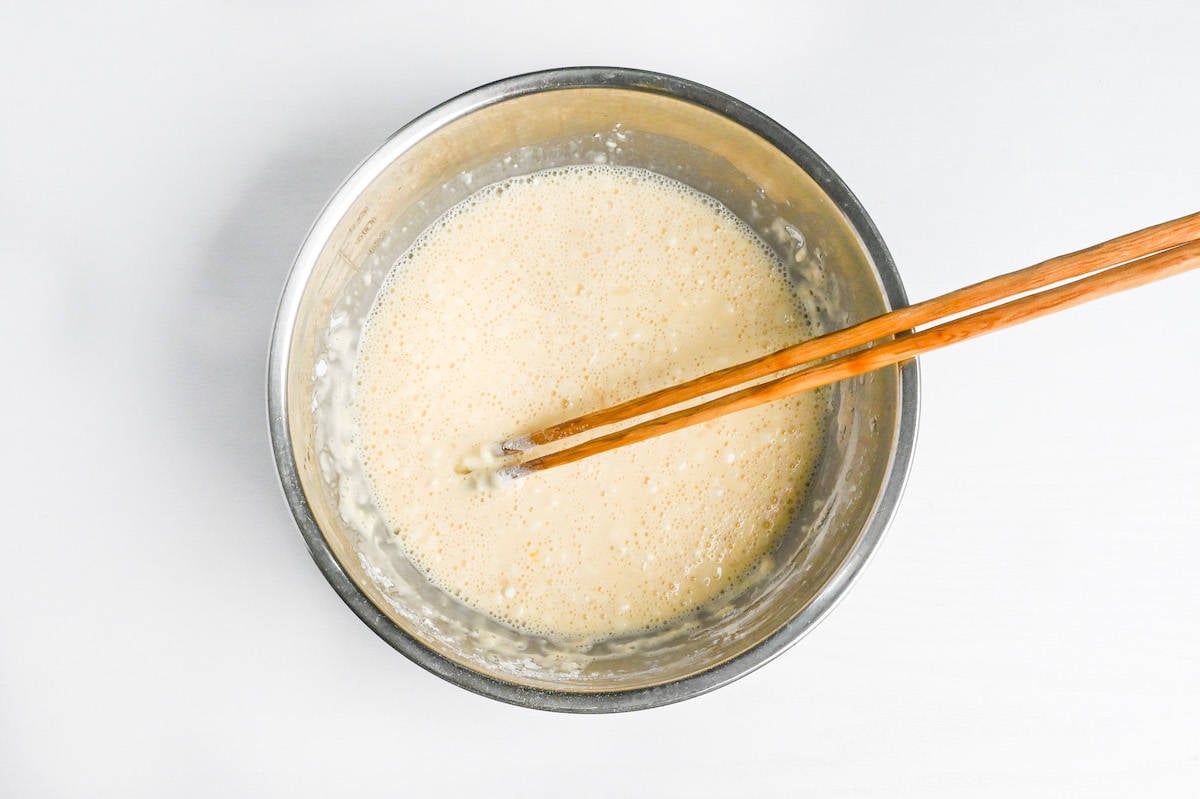
Dip floured ingredients into the batter and fry in batches. Remove when crispy but not golden.
Rather than making a batter and resting it in the fridge, use chilled ingredients instead. I make sure to refrigerate my water, eggs and even flour for at least 30 minutes before I start mixing the batter.
A nicely chilled batter reacts more strongly with the hot oil, making the tempura extra puffy and light.
Once your batter is mixed, I recommend keeping it in the fridge or freezer when you’re not using it. This will help keep it cold between frying each batch.
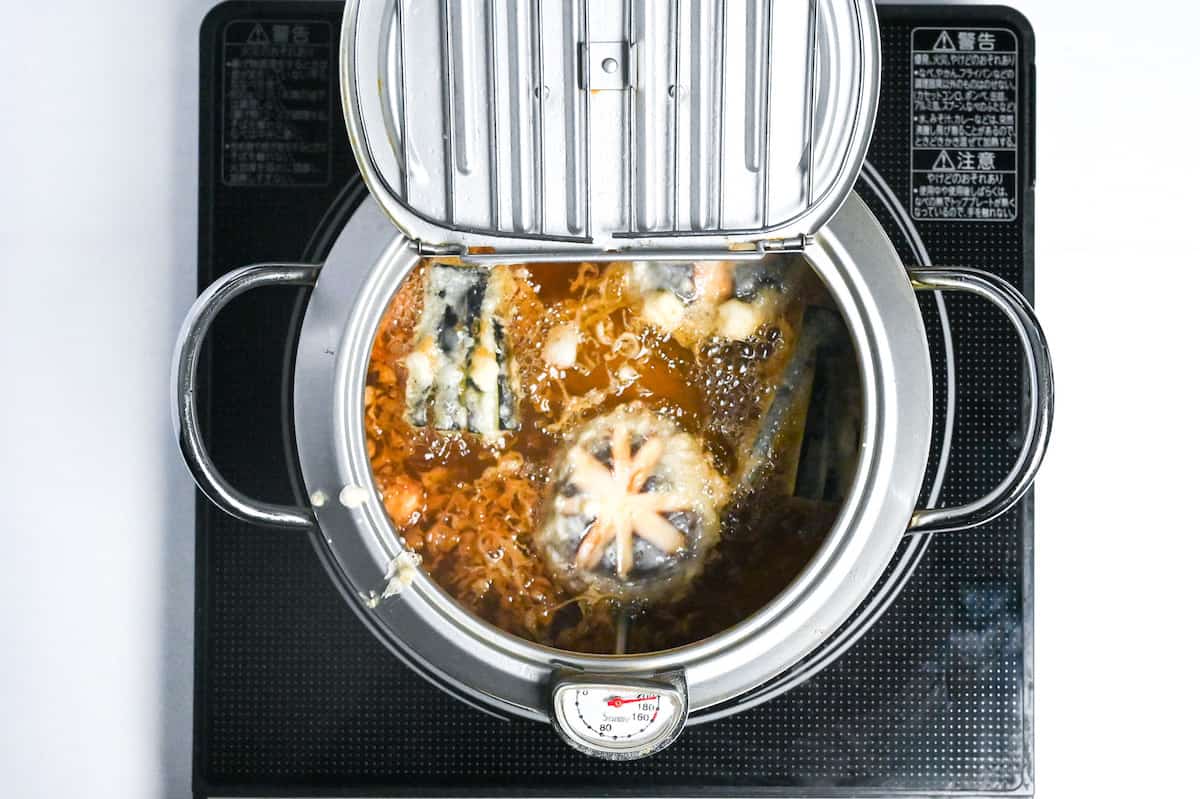
Different vegetables require different preparations before frying, so it’s better to have everything washed/peeled/cut, etc, before you make the batter.
Vegetables like eggplant or potatoes tend to soak up oil and become greasy. You can prevent this by soaking them in cold water for 5-10 minutes and then drying them thoroughly before frying.
One of the most common problems people face when making tempura is the batter falling off. To prevent this, thoroughly dry each vegetable with a paper towel and then coat them with a thin layer of flour before dipping them in the tempura batter.
So, in a nutshell, before dipping any ingredient in tempura batter you should:
- Wash, peel, and cut your ingredients
- Soak eggplants or potatoes in cold water for 5-10 minutes
- Dry all ingredients with a paper towel
- Coat in a thin layer of flour (all purpose or cake flour)
Cook udon as per package instructions, rinse with boiling water.
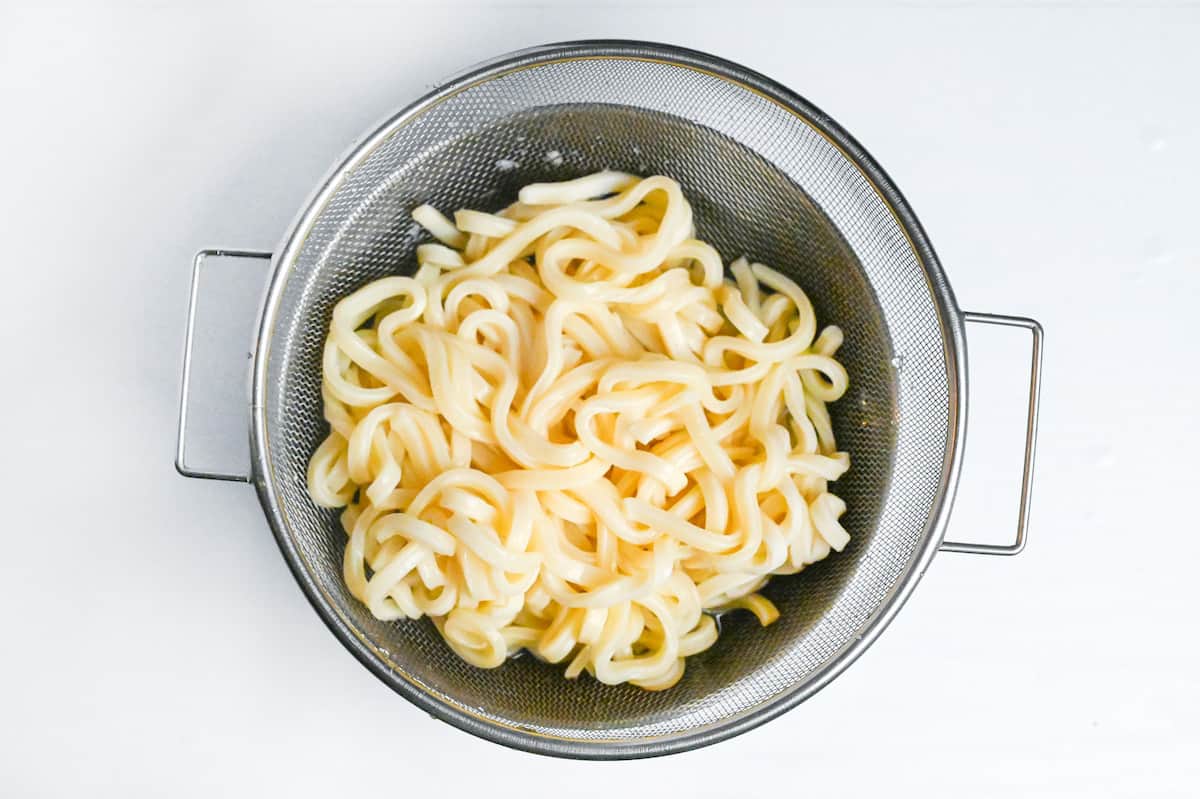
Boil dashi stock, add soy sauce, mirin, and salt.
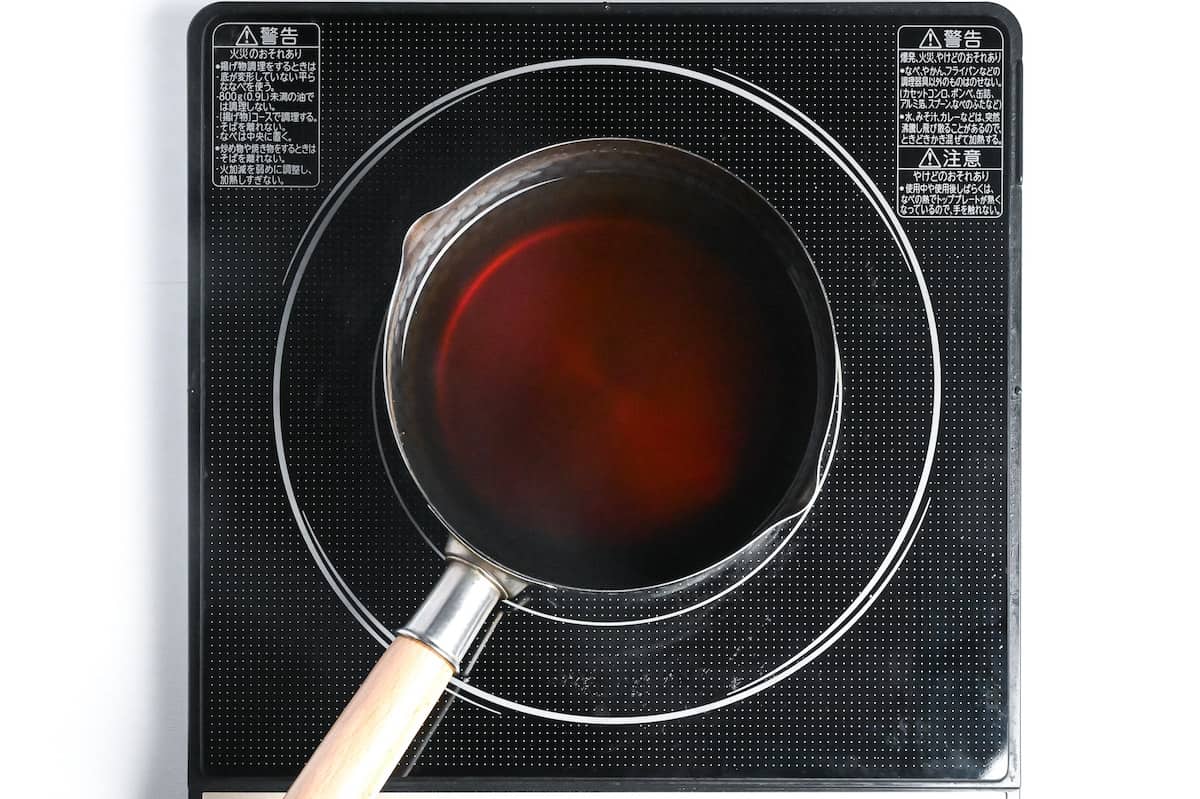
Divide noodles and broth into bowls. Add kamaboko slices and tempura. Garnish with green onions and Japanese chili powder if desired.
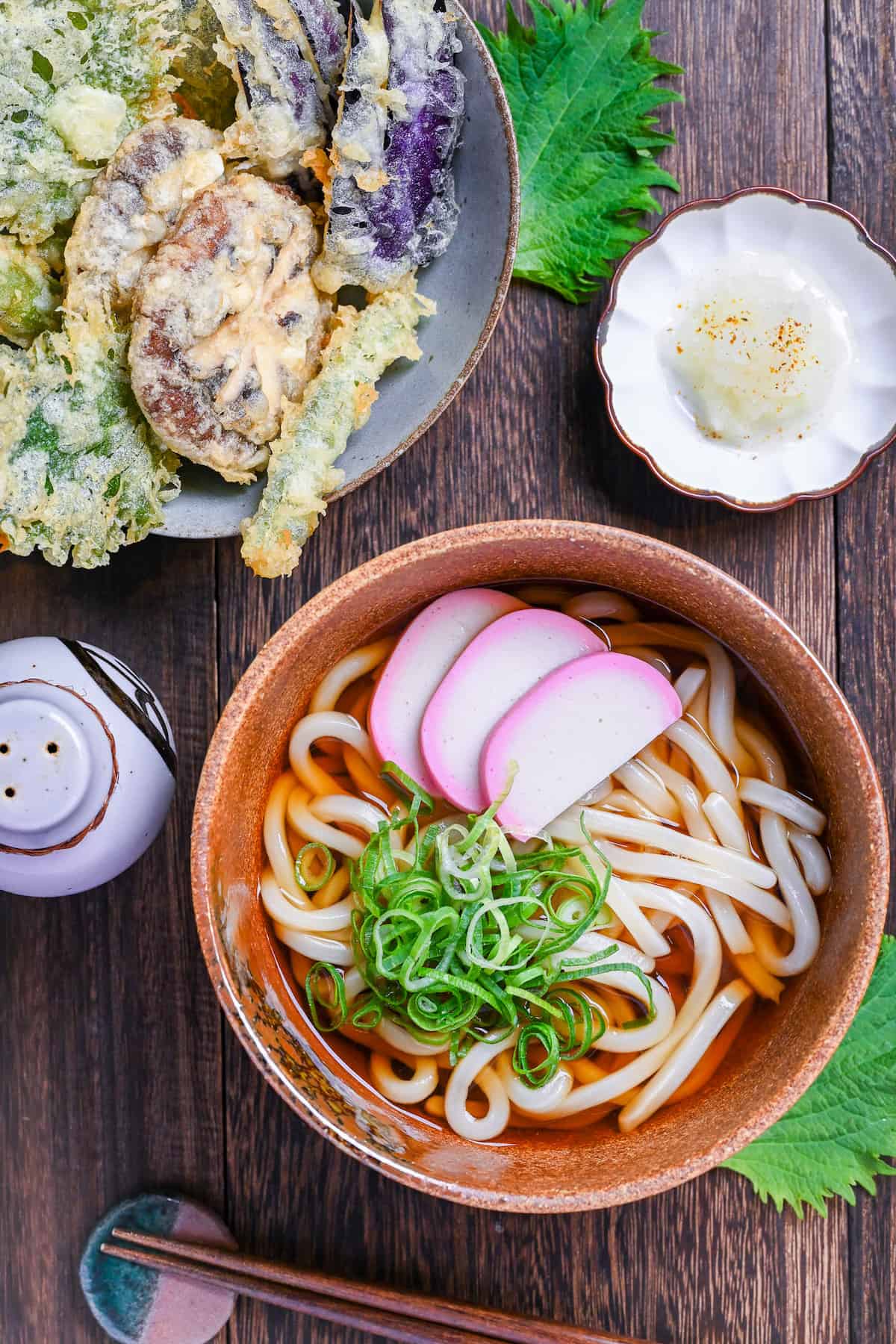
I hope you enjoy this Vegetable Tempura Udon recipe! If you try it out, I’d really appreciate it if you could spare a moment to let me know what you thought by giving a review and star rating in the comments below. It’s also helpful to share any adjustments you made to the recipe with our other readers. Thank you!
More Japanese Udon Recipes
- Beef Udon Noodle Soup (Niku Udon)
- Japanese Curry Udon
- Oyako Udon (Chicken and Egg Udon Noodle Soup)
- Shrimp Tempura Udon Noodle Soup (Ebiten Udon)
Want more inspiration? Explore my Udon Recipe Roundup Post for a carefully selected collection of tasty udon recipe ideas to spark your next meal!
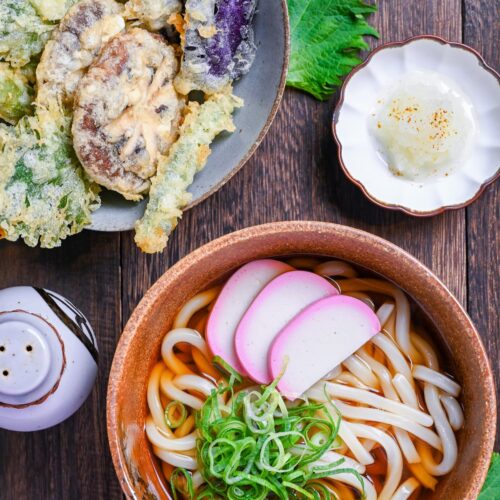
Vegetable Tempura Udon
Ingredients
Tempura
- 150 ml water chilled
- 100 ml soda water (or club soda) chilled
- 30 g cornstarch
- 150 g cake flour plus extra for dusting
- 1 egg chilled
- 4 fresh shiitake mushroom stems removed
- 100 g eggplant cut into wedges and soaked in cold water
- 8 perilla (shiso) leaves (ooba/shiso)
- 4 stalks of asparagus cut into halves or thirds
- cooking oil for deep frying (vegetable, canola, peanut or white sesame)
Udon soup and toppings
- 1 liter dashi stock Check out my homemade dashi recipe / plant based dashi
- 75 ml soy sauce
- 30 ml mirin
- ½ tsp salt
- 4 portions udon noodles
- 8-12 slices kamaboko fish cake (Japanese fish cakes) omit for vegetarians
- green onion finely chopped to garnish
- Japanese chili powder (shichimi togarashi) (shichimi togarashi) optional garnish
Instructions
Tempura
- Measure out 150 ml water and place in the fridge for 20-30 mins. Place the sparkling water in the fridge too. (Preferably an unopened bottle.)

- Sift 30 g cornstarch and 150 g cake flour into a small bowl. Mix them together and place the bowl in the fridge/freezer for 20-30 minutes to chill.

- After 30 minutes have passed, start preheating your cooking oil to 180 °C (356 °F).

- While you wait for the oil to heat up, wash, peel, cut and dry all your vegetables. (Use kitchen paper to dry thoroughly.) Coat each piece with a thin layer of flour and set aside ready to batter.

- Pour the chilled water and 100 ml soda water (or club soda) into a bowl. Add 1 egg straight from the fridge and whisk until well incorporated. (If any foam has formed from whisking, scoop it out with a spoon.)

- Sift the flour/starch mixture into the egg mixture one-third at a time. Using chopsticks or a spatula, draw crosses in the mixture to mix in the flour to combine, being careful not to overmix.Once there are no more dry bits of flour, the batter is ready. Store in the fridge until the oil is ready. Test your oil by adding a drop of batter; if it sizzles and floats, it’s ready to go. (If it sinks, heat for longer.)

- Dip your floured ingredients into the batter one by one and place them straight into the oil. I recommend cooking each type of ingredient together in batches to ensure even cooking.

- Remove each ingredient when it becomes crispy but before it turns golden. Tempura should be pale in color. Place on a wire rack to allow excess oil to drip off.

Broth
- Cook the udon noodles according to the instructions on the packaging. Once cooked, drain the water by pouring the noodles through a strainer, then rinse them with fresh boiling water.

- In a large pot, add 1 liter dashi stock and bring to a boil. Once boiling, add 75 ml soy sauce and 30 ml mirin. Boil for 2 minutes, then turn off the heat and add ½ tsp salt.

Assembly
- Place a portion of noodles in each bowl and evenly divide the broth. Place 2-3 slices of kamaboko on top of each portion. Place the tempura on top of each bowl or serve it on the side, depending on your preference.

- Sprinkle with chopped green onion and Japanese chili powder (shichimi togarashi) (optional).
- Enjoy!
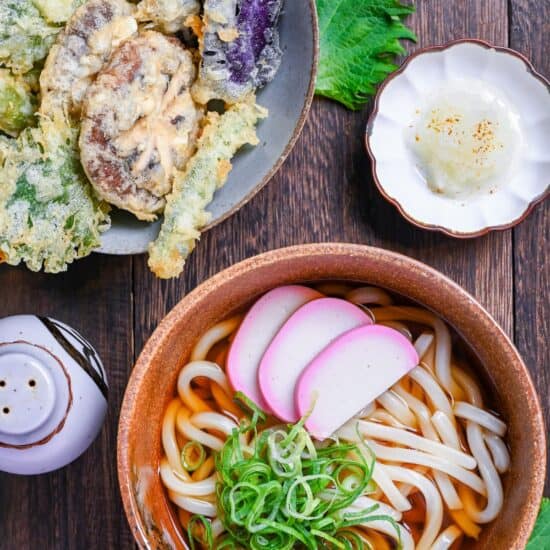


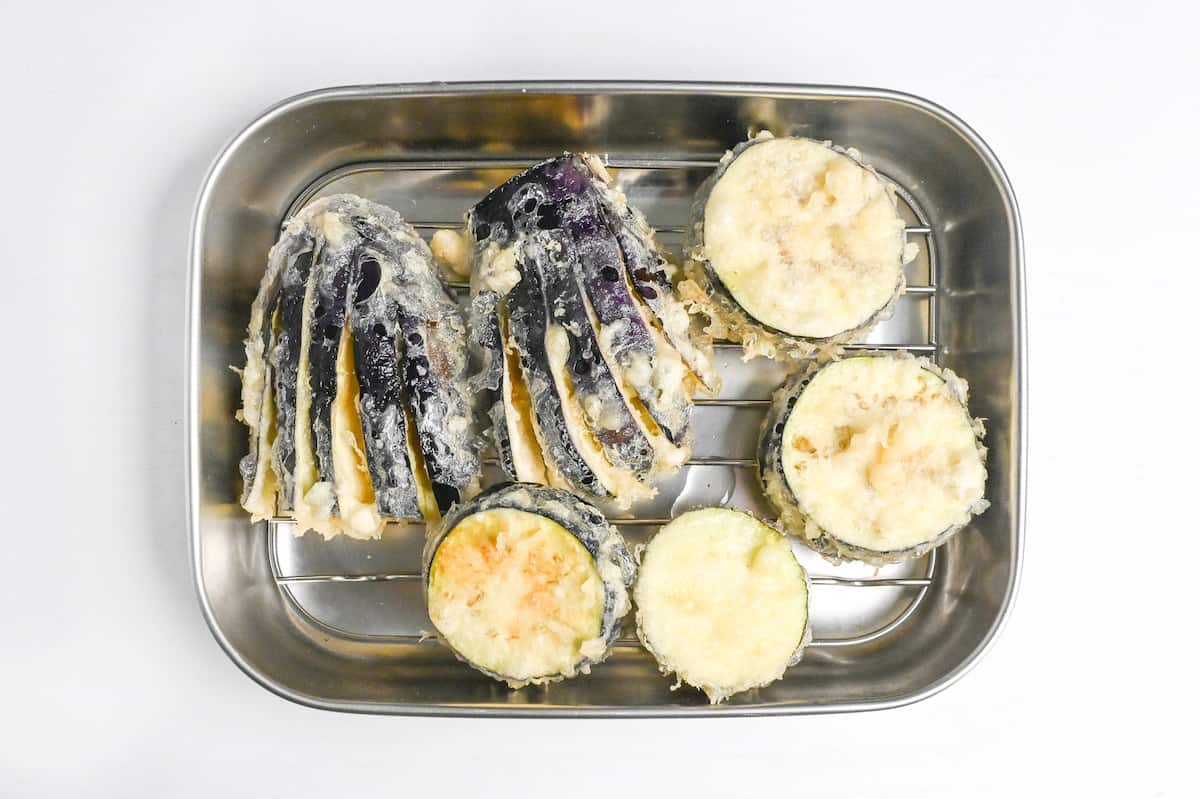
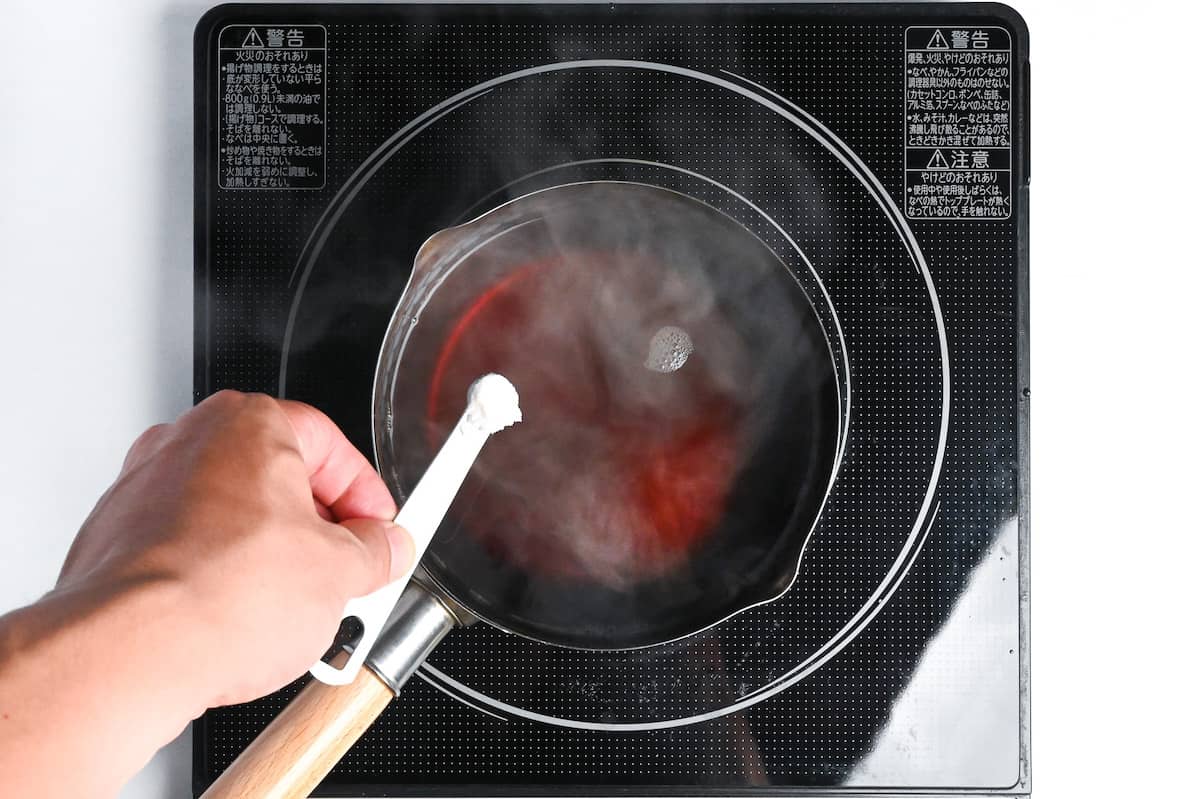
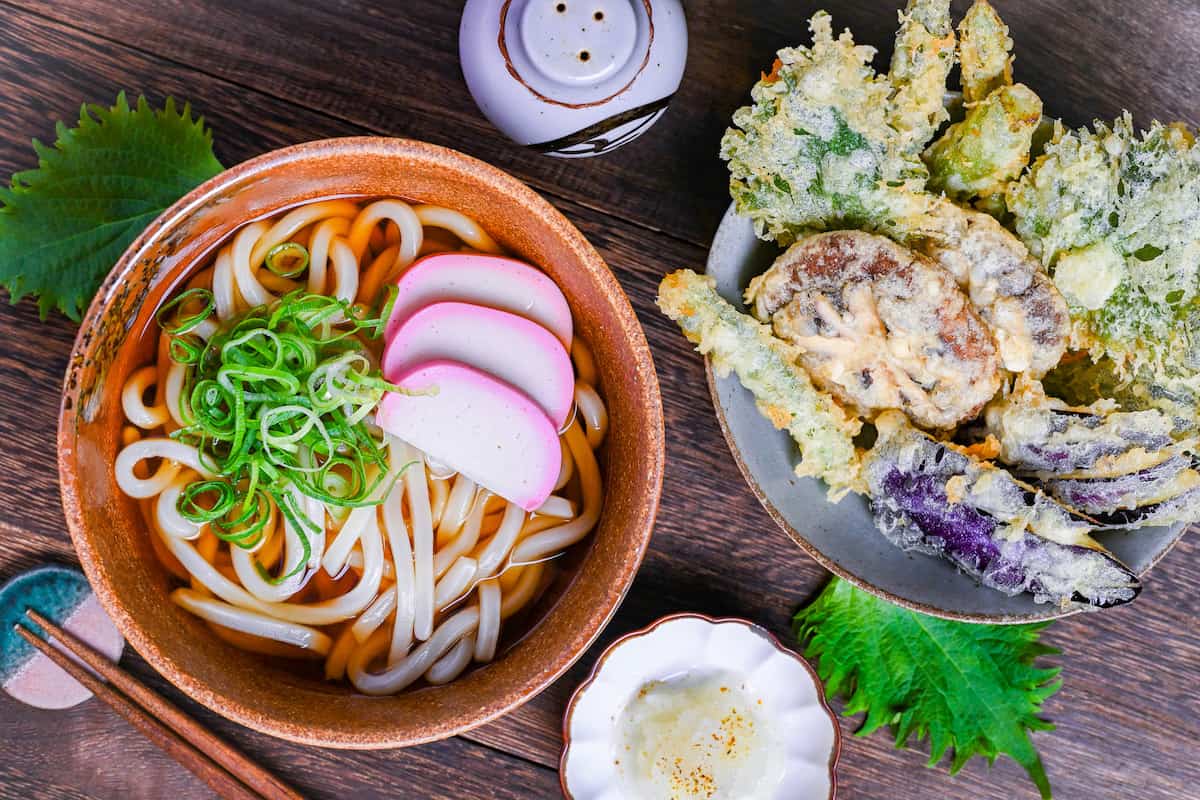
Leave a rating and a comment